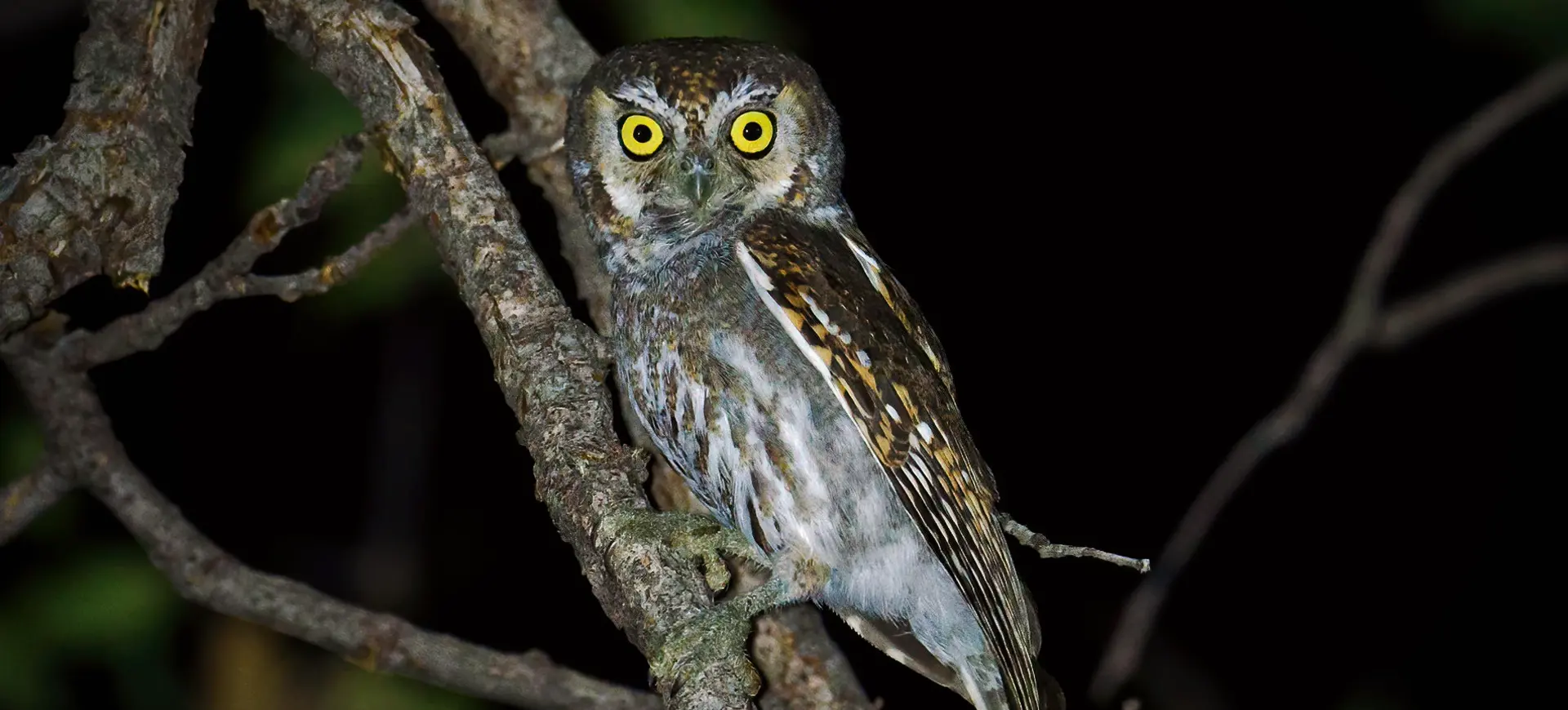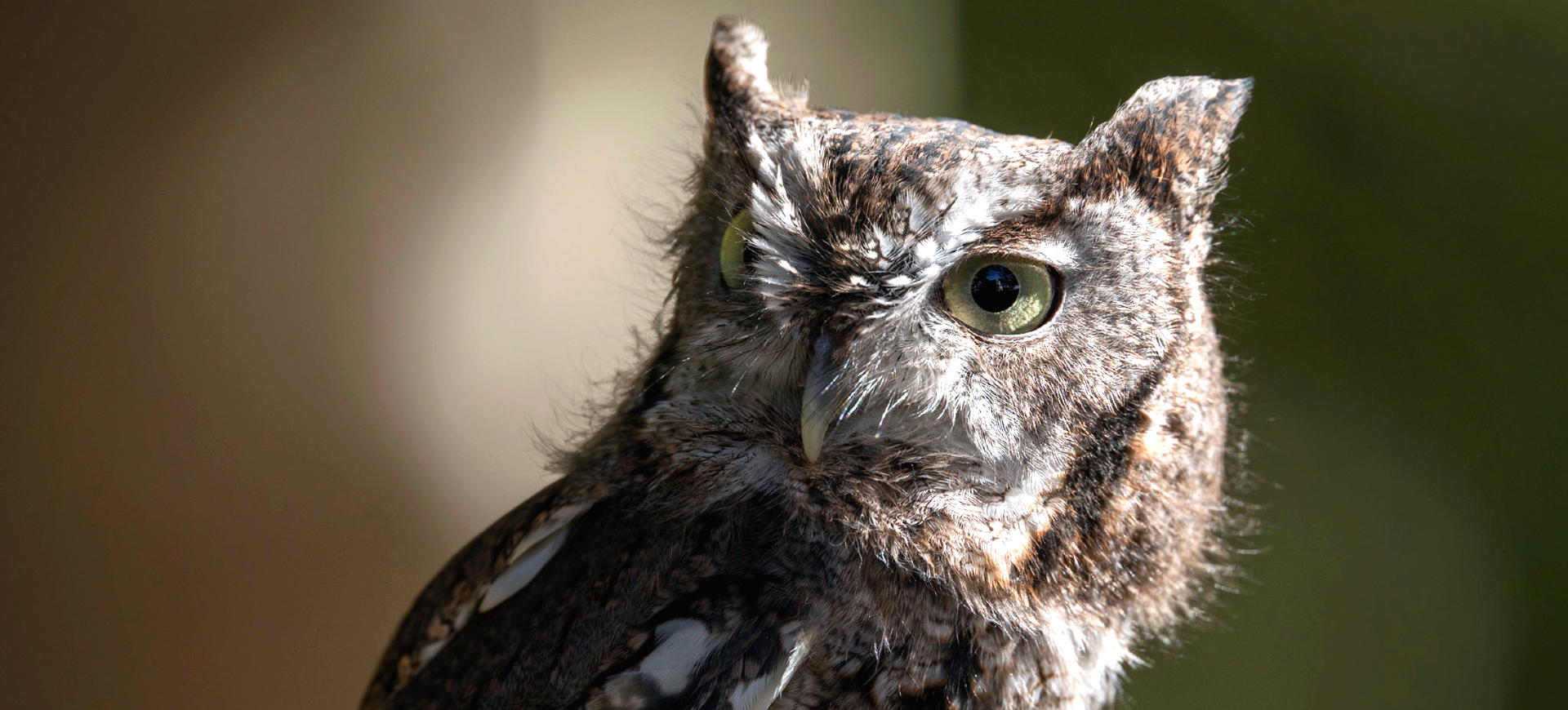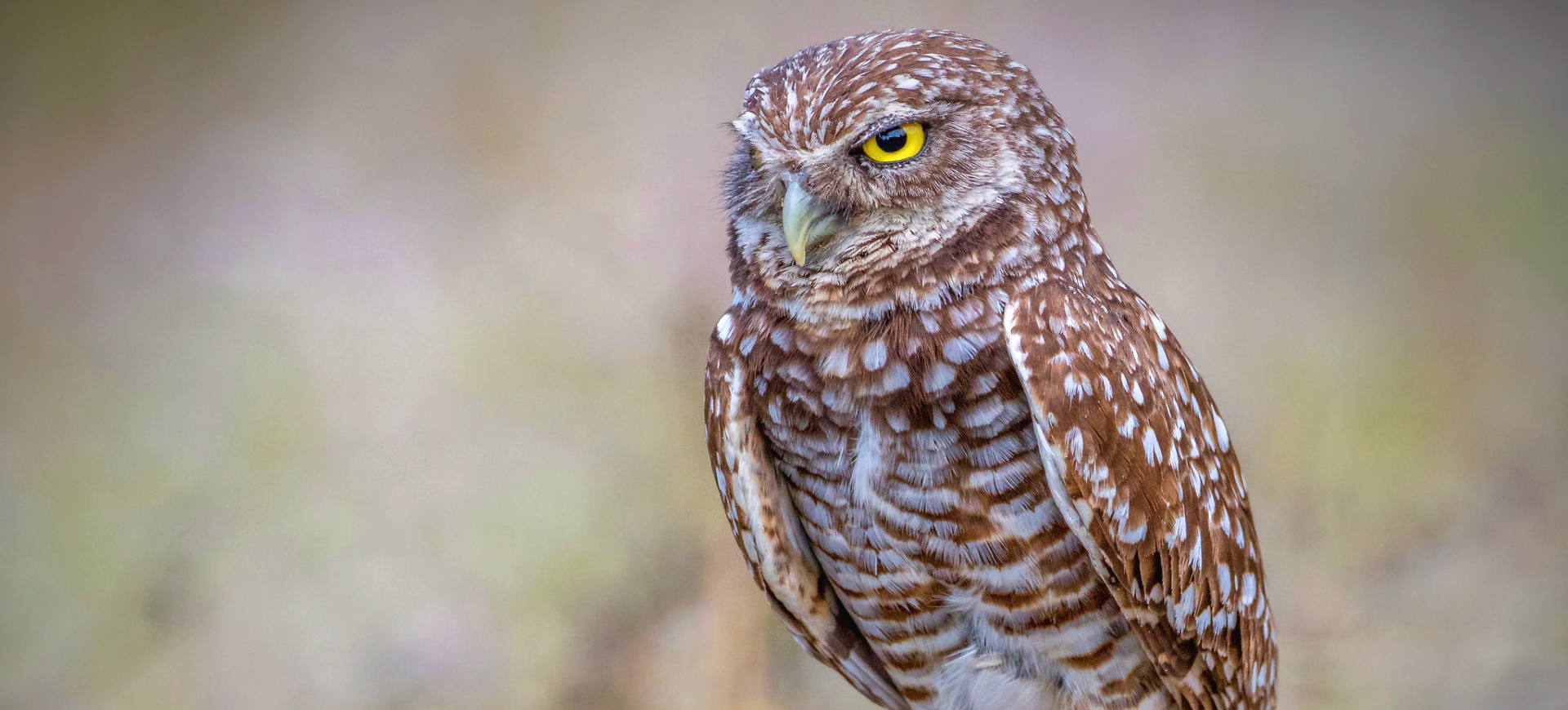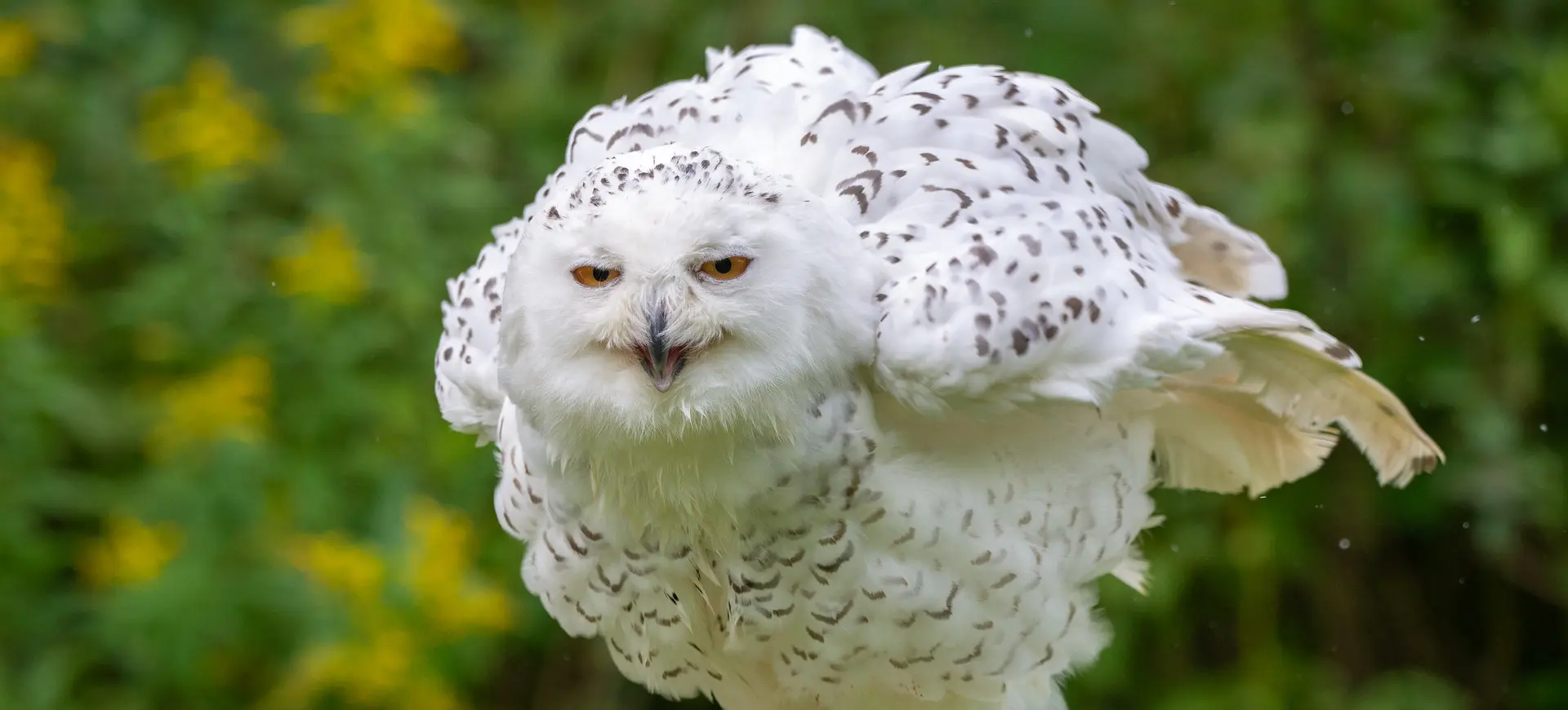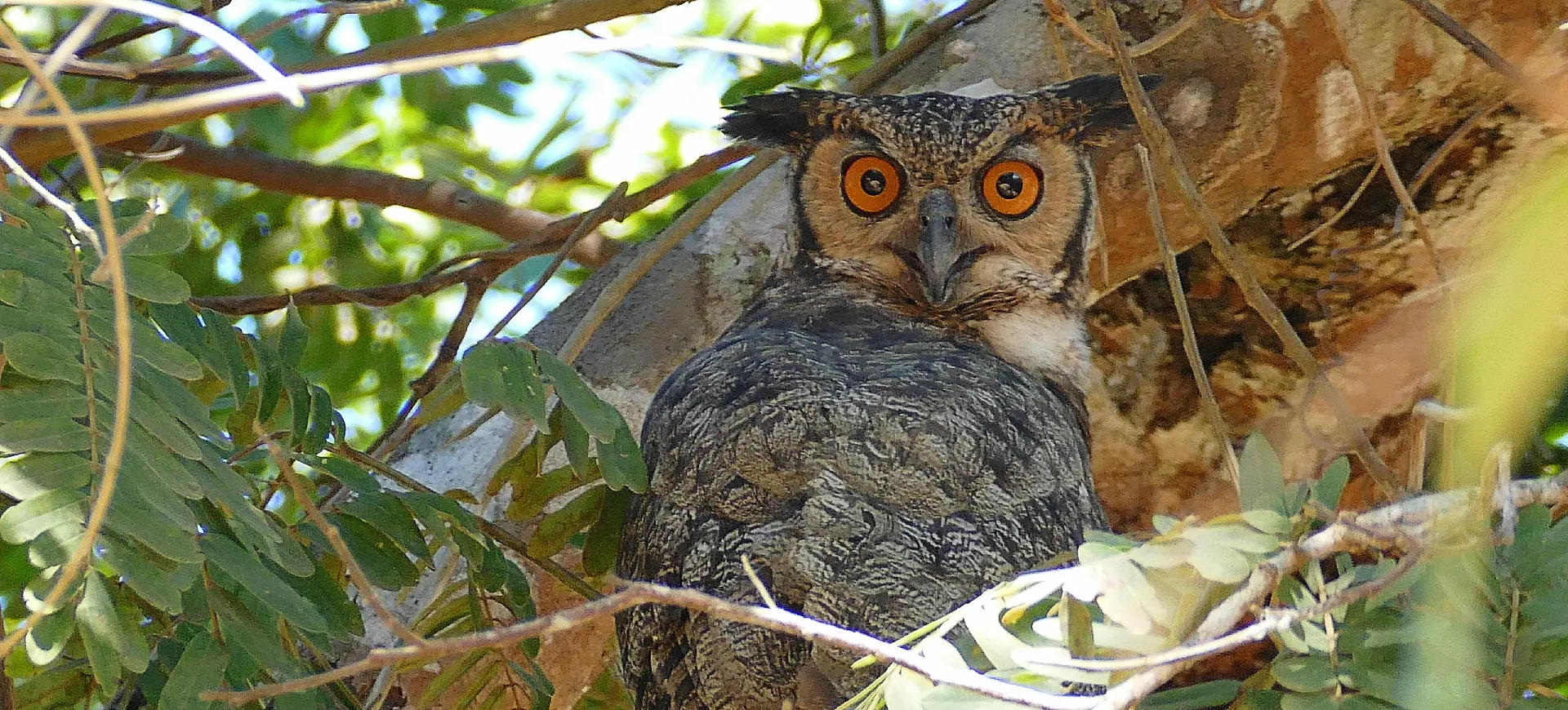Overview
The Eurasian Eagle-owl, one of the largest species of owls, possesses a commanding presence with its size and vividly orange eyes. Its plumage is predominantly mottled brown, allowing it to blend seamlessly into its surroundings. This species is noted for its powerful flight, which is almost silent due to its feather structure. Found across a wide range of habitats, the Eurasian Eagle-owl is a nocturnal predator known for its deep and resonant hooting calls.
The owl’s diet is versatile, feeding on various prey, including mammals, other birds, and even larger prey like young deer. This adaptability in diet reflects the owl’s skilled hunting abilities and its role as a top predator in its ecosystem. The Eurasian Eagle-owl is also known for its remarkable eyesight and hearing, essential for nocturnal hunting. Its ability to see in low light conditions and hear the slightest movements of prey is unparalleled among birds of prey.
In terms of behavior, the Eurasian Eagle-owl is typically solitary or found in pairs, especially during the breeding season. Its nesting sites are often on cliff ledges, crevices, or large tree cavities. During the breeding season, these owls are fiercely territorial and tend to defend their nests aggressively against intruders. The species plays a significant role in folklore and mythology across various cultures, symbolizing wisdom and knowledge.
Taxonomy
Kingdom
Phylum
Class
Order
Family
Genus
Species
Sub Species
Type
Physical Description:
The Eurasian Eagle-owl is a striking bird characterized by its large size, prominent ear tufts, and deep orange eyes. The plumage is predominantly mottled brown, with darker streaks, aiding camouflage. Adult owls have a robust build, with powerful paws and a large head. The distinct facial disc helps channel sound to the ears, enhancing auditory perception.
In size, the Eurasian Eagle-owl ranks among the world’s largest owls. Males and females exhibit sexual dimorphism, with females typically larger than males. The bird’s wingspan is impressive, contributing to its powerful and graceful flight. Its physical adaptations, including silent flight and strong nails, make it an efficient nocturnal hunter.

Lifespan: Wild: ~20 Years || Captivity: ~60 Years

Weight: Male: 3.3-4.2 lbs (1.5-1.9 kg) || Female: 4.6-6.6 lbs (2.1-3 kg)

Length: Male: 24-27 inches (60-68 cm) || Female: 26-30 inches (65-75 cm)

Height: Male: 18-22 inches (45-55 cm) || Female: 22-27 inches (55-68 cm)

Wingspan: Male & Female: 63-74 inches (160-188 cm)

Top Speed: 40 mph (64 km/h)
Characteristic:
Native Habitat:
The Eurasian Eagle-owl inhabits various environments, from coniferous forests to rocky regions. It prefers habitats with a mix of open areas for hunting and dense areas for roosting and nesting. The owl’s ability to adapt to various habitats has contributed to its wide distribution across Eurasia. In addition to natural habitats, it is also found in semi-urban areas, utilizing human nest structures.
The species is known for its preference for rugged terrain, such as cliffs and mountainous regions. These habitats provide excellent vantage points for hunting and relative safety from potential predators. The Eurasian Eagle-owl uses large trees in forested areas for roosting and nesting. Its adaptability to different habitats has helped it to maintain stable populations in many parts of its range.
Climate Zones:
Biogeographical Realms:
Countries:
Diet:
Diet & Feeding Habits:
The Eurasian Eagle-owl has a diverse diet, primarily consisting of small to medium-sized mammals and birds. It is known to hunt various prey, including rodents, rabbits, hares, other small mammals, and other birds ranging from small songbirds to medium-sized raptors. The owl’s hunting strategy involves still hunting from a perch and flying low over the ground. Its excellent night vision and acute hearing are critical in locating prey, even under low light conditions or in dense vegetation.
In addition to live prey, the Eurasian Eagle-owl occasionally scavenges, particularly in harsh weather conditions or when prey is scarce. This adaptability in feeding habits ensures its survival across various environments. The owl swallows smaller prey whole and tears larger prey into smaller pieces before consuming. Indigestible parts of the prey, such as bones and fur, are regurgitated as pellets, which can provide insights into the owl’s diet for researchers.
Mating Behavior:
Mating Description:
The Eurasian Eagle-owl’s mating season typically begins in late winter, with courtship behaviors including vocal duets and aerial displays. Pairs are generally monogamous, often forming long-term bonds lasting several years. The male performs elaborate displays to attract a female, including clapping his wings while flying and presenting food. The pair engages in mutual preening and calling, strengthening their bond. Nesting sites are chosen for their seclusion and safety, often on cliff ledges or in large tree cavities.
The female lays 1 to 4 eggs, which she incubates for about 34-36 days while the male provides food. The chicks are born altricially, requiring extensive care and feeding by both parents. The young owls fledge around 7 weeks of age but remain dependent on their parents for several months thereafter. The parental care exhibited by Eurasian Eagle-owls is extensive, ensuring the survival and development of the offspring in their early stages.
Reproduction Season:
Birth Type:
Pregnancy Duration:
Female Name:
Male Name:
Baby Name:
Social Structure Description:
The Eurasian Eagle-owl is primarily a solitary bird, except during the breeding season when pairs form. Outside of the breeding season, individuals maintain and defend their territories. Territorial disputes are usually resolved through vocal displays and posturing rather than physical confrontations. This solitary nature is typical of many owl species and is linked to their hunting and lifestyle requirements. During the breeding season, pairs show strong bonds and engage in cooperative behaviors, including nest-building and raising their young. The pair’s territory becomes crucial, providing a safe nesting site and ample hunting grounds to support their offspring. The territorial behavior of Eurasian Eagle-owls is especially pronounced during this time, with both males and females aggressively defending their nesting area against intruders. This parental investment and territorial defense level is key to successfully rearing their young.
In terms of social interactions, Eurasian Eagle-owls communicate through a variety of vocalizations. These calls serve multiple purposes, including territory establishment, mate attraction, and signaling alarm. Visual signals, such as body postures and movements of the ear tufts, also play a role in communication. Although generally solitary, these owls can be vocal and interactive during mating, demonstrating a complex and nuanced social structure.
Groups:
Conservation Status:
Population Trend:
The Eurasian Eagle-owl is considered a species of ‘Least Concern’ by the IUCN, indicating a stable and widespread population. However, regional variations in population density exist, with some areas declining due to habitat loss and human disturbance. The species has shown resilience in adapting to changing environments, which has helped maintain its numbers. In many parts of its range, especially in remote and protected areas, the Eurasian Eagle-owl is relatively common and faces fewer threats.
Despite its stable status, the Eurasian Eagle-owl faces challenges in certain regions. These challenges include habitat destruction, human persecution, and collisions with vehicles and power lines. In some European countries, the species has declined, leading to conservation efforts to protect its habitats and mitigate threats. Monitoring of population trends is crucial to ensure the species’ long-term survival in areas where it is threatened.
Population Threats:
The main threats to the Eurasian Eagle-owl include habitat loss due to agricultural expansion and urban development. These changes reduce the availability of suitable nesting and hunting grounds. Additionally, human persecution, often due to misconceptions about the owl posing a threat to game species or livestock, is a significant problem in some areas. Using rodenticides also indirectly affects the owl, leading to secondary poisoning through its prey.
Collisions with vehicles and electrocution from power lines are other notable threats to the Eurasian Eagle-owl. Conservation efforts, including habitat protection and public awareness campaigns, are crucial in mitigating these threats—research into the species’ ecology and behavior aids in formulating effective conservation strategies. In regions where populations have declined, targeted conservation measures are needed to ensure the species’ survival.
Conservation Efforts:
Conservation efforts for the Eurasian Eagle-owl include habitat protection and restoration, particularly in areas where the species has declined. Legal protection has been granted in many countries, which helps reduce persecution and hunting. Breeding programs in some zoos and wildlife centers also contribute to conservation efforts, especially in regions where local populations have significantly declined.
Educational programs aimed at raising public awareness about the Eurasian Eagle-owl’s ecological role and the threats it faces are essential. These programs help dispel myths and promote coexistence between humans and owls. Research into the species’ ecology and monitoring of population trends are ongoing, providing valuable data for conservation planning. Conservation strategies include efforts to reduce vehicle collisions and electrocution, such as modifying power lines and creating safe crossing points.
Additional Resources:
Fun Facts
- The Eurasian Eagle-owl’s orange eyes are striking and highly adapted for night vision.
- It is one of the world’s largest species of owls, with a wingspan exceeding 6 feet.
- Unlike many other bird species, the female Eurasian Eagle-owl is larger than the male.
- Their deep, resonant “ooh-hu” call can be heard over several kilometers on a still night.
- Eurasian Eagle-owls can rotate their heads up to 270 degrees, aiding in their wide field of vision.
- These owls do not build their nests but often take over abandoned nests of other large birds or use cliff ledges.
- The species has a notable ability to fly silently, owing to specialized feather structures.
- Eurasian Eagle-owls have been known to live in captivity for up to 60 years.
- In some cultures, the Eurasian Eagle-owl is considered a symbol of wisdom and protection.
- They are skilled hunters, capable of taking down prey much larger than themselves, including other birds of prey.










